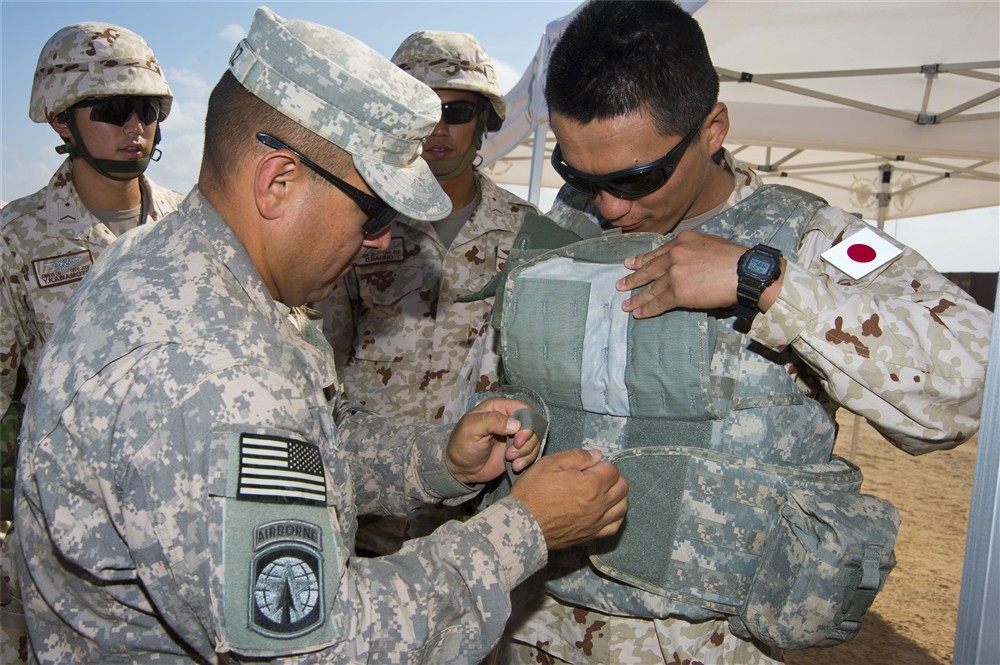This post is also available in:
 עברית (Hebrew)
עברית (Hebrew)
The US Army is enhancing soldier protection, in attempt to increase soldier mobility and lethality. After several years of research and development, the Army is now in the process of fielding its new Soldier Protection System, a next-generation suite of personal protective equipment that promises to be lighter and more tailorable to meet individual soldiers’ needs.
The new equipment incorporates several sub-systems including a series of lighter weight ballistic plates known as Vital Torso Protection (VTP), Torso and Extremity Protection (TEP) comprising a new modular scalable vest and combat shirt, and a lighter combat helmet known as the Integrated Head Protection System.
In addition, soldiers will receive new Transition Combat Eye Protection (TCEP), ballistic protective eyewear that can adapt quickly to light and dark scenarios similar to everyday sunglasses.
“The more mobile you are, the more survivable you are,” says Lieutenant Colonel Ginger Whitehead, product manager for soldier protective equipment at the US Army’s Program Executive Office (PEO) Soldier. “Anytime that you are decreasing the weight that a soldier carries, and giving them more range of motion, that enables them to move better on the battlefield.”
The new modular scalable vest – which Whitehead notes is the “crown jewel” of the Soldier Protection System – replaces the Improved Outer Tactical Vest (IOTV) which was introduced in the latter years of the Iraq War. The goal was to make the new vest as light as possible, and pushing the envelope in terms of materials and new technologies.
The vest can be adapted in such a way that in its lightest form it can be worn under civilian clothing, while the heaviest configuration can protect against a myriad of battlefield threats. For added safety, particularly in terms of removing soldiers from burning vehicles or aircraft, there is a four-point quick release system on the vest.
Ceramics in the soldiers’ hard armour plates still drive much of the weight in protection systems, with Whitehead explaining that the service is constantly looking at new blends of materials that make ceramics lighter, yet harder.
The incoming VTP will leverage some of these advancements, with the army hoping that it will achieve between 7% and 30% weight savings over its predecessor.
One size doesn’t fit all. While customization was not possible on previous soldier protection equipment, the new system is tailorable, and can be scaled depending on the mission, the threats and the terrain, Whitehead told army-technology.com. This is particular important as frontline combat roles are progressively opened up to women. The new gear can be tailored to accommodate women.
For the future, the US Army is eyeing emerging technologies and materials including ultra-high-molecular-weight polyethylene composites, with studies looking at its use in protection gear such as helmets.
The use of next-generation Kevlar, a heat-resistant and strong synthetic fiber, and even biologically engineered spider silk is also considered. The US Army is currently working with Kraig Biocraft Laboratories to develop a strain of genetically engineered silkworms for protective textiles.


























